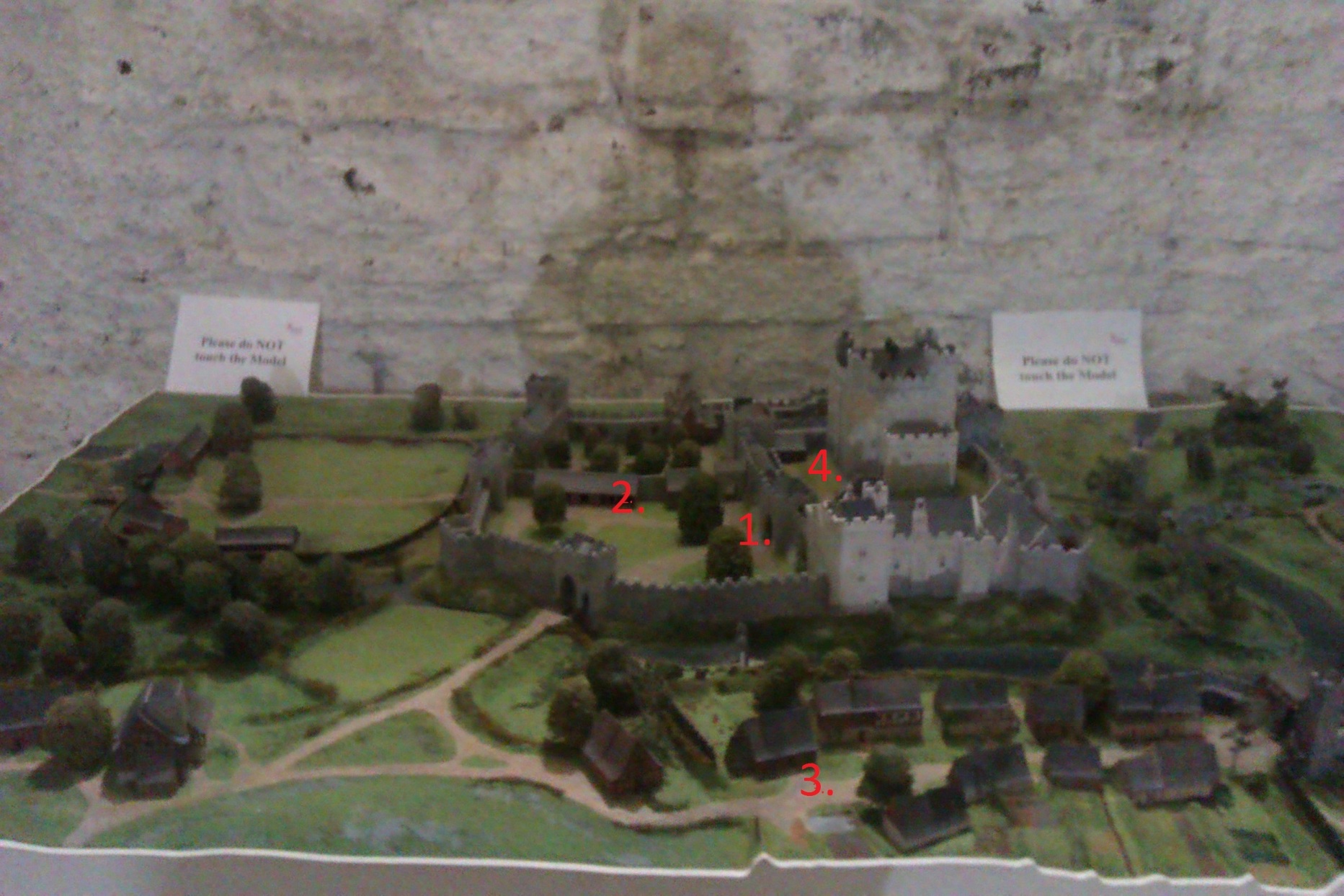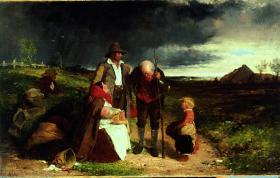21 March 1656 AD. The death of James Ussher, the protestant Archbishop of Armagh on this day. James Ussher was one of the most influential people in these islands in the early and middle years of the 17th century. He was born in Dublin in 1581 to an Old English family. Although his father was a Protestant and his mother a Catholic he was raised in the new religion. His family were well connected with his uncle Henry being Archbishop of Armagh from 1595. James was a scholarly child and entered Trinity College at the age of 13. He followed a career into the church of his father.
He received his Bachelor of Arts degree by 1598, and was a fellow and MA by 1600 In May 1602, he was ordained in the Trinity College Chapel as a deacon by his uncle Henry Ussher, the Archbishop of Armagh and Primate of All Ireland. Ussher went on to become Chancellor of St Patricks Cathedral in Dublin in 1605. He became Professor of Theological Controversies at Trinity College and a Bachelor of Divinity in 1607, Doctor of Divinity in 1612, and then Vice Chancellor in 1615 and vice-provost in 1616. In 1613, he married Phoebe, daughter of a previous Vice Provost, Luke Challoner, and published his first work. In 1615, he was closely involved with the drawing up of the first Confession of Faith of the Church of Ireland. This document carved out a separate and distinct identity for the Protestant Church in Ireland.
Ussher was a convinced Calvinist and viewed with dismay the possibility that people he regarded as anti-Christian papists might achieve any sort of power. He called a secret meeting of the Irish bishops in his house in November 1626, the result being the "Judgement of the Arch-Bishops and Bishops of Ireland". This begins:
The religion of the papists is superstitious and idolatrous; their faith and doctrine erroneous and heretical; their church in respect of both, apostatical; to give them therefore a toleration, or to consent that they may freely exercise their religion, and profess their faith and doctrine, is a grievous sin.
The Judgement was not published until it was read out at the end of a series of sermons against the Graces given at Dublin in April 1627.
In 1631, he produced a new edition of a work first published in 1622, his "Discourse on the Religion Anciently Professed by the Irish", a ground-breaking study of the early Irish Church which sought to demonstrate how it differed from Rome and was, instead, much closer to the later Protestant church. This was to prove highly influential, establishing the idea that the Church of Ireland was the true successor of the early Celtic church — a belief that persists in some Protestant circles to the present day.
In 1640 he had left Ireland for good and though he continued to live an active life in England during the years of the Civil Wars he remained loyal to King Charles as long as he could. He witnessed the execution of the King on 30 January 1649 but reputedly fainted before the axe fell!
Today though Ussher is best remembered for his claim that the World was created in the year 4004 BC. He came to this conclusion by a close study of Biblical Texts and other Ancient writings. At the time this was considered to be ground breaking work that put Ussher at the top end of Biblical scholars.
He published his initial findings under the title Annales Veteris Testamenti, a prima mundi origine deducti, una cum rerum Asiaticarum et Aegyptiacarum chronico, a temporis historici principio usque ad Maccabaicorum initia producto. ("Annals of the Old Testament, deduced from the first origins of the world, the chronicle of Asiatic and Egyptian matters together produced from the beginning of historical time up to the beginnings of Maccabes").
He opened his work with the famous lines:
“In the beginning, God created heaven and earth, which beginning of time, according to this chronology, occurred at the beginning of the night which preceded the 23rd of October in the year 710 of the Julian period.” In the right margin of the page, Ussher computes the date in “Christian” time as 4004 B.C.
At the time this was considered to be ground breaking work that put Ussher at the top end of Biblical scholars.
In 1654 with his sight failing and finding it hard to write, he went to stay with an old friend, the Countess of Peterborough, in her house in Reigate in Surrey. Two years later on 19 March the Archbishop was taken with a fierce pain in his side at supper and retired to bed. It became clear that he had little time left and after praying with the countess’s chaplain and saying a regretful farewell to the countess herself. On 21 March he died at about one o’clock in the afternoon the next day. His last words were reported as ‘O Lord forgive me, especially my sins of omission.’
The body was embalmed and the plan was to bury him in Reigate, but Cromwell insisted on a state funeral and Ussher was laid to rest in Westminster Abbey. The fact that Cromwell was content to allow an Anglican bishop to be buried in Westminster is a clear indication of the respect in which Ussher was held, even by those who were theologically opposed to him. And indeed, after his death Ussher's reputation as a saintly scholar ensured that his posthumous endorsement was sought by a wide range of writers and ecclesiastical leaders, from the seventeenth century nonconformists to the nineteenth century Oxford movement.
Ussher was also a great collector of books and manuscripts and whose contribution to Irish learning has been often overlooked. He was true bibliophile - the older the better. His Library contained over 10,000 volumes. After his death his relative Henry Jones (a former officer in Cromwell’s army and later vice-chancellor of Trinity College) in 1661 donated the whole of his collection to Trinity College - where it is still one of the cornerstones of the Old Library.
Archbishop Ussher is described as well made, and moderately tall, of an erect carriage, with brown hair and a ruddy complexion; his features expressed gravity and benevolence, and his appearance commanded respect and reverence. He was of a vigorous constitution and of simple and temperate habits, which enabled him to bear a life of incessant study; his manners were courteous and affable, his temper sweet and peaceable. He was an impressive preacher, "not with enticing words of human wisdom, but in demonstration of the Spirit and with power." He was of a deeply religious cast of mind — his intolerance being a fault common to all men in that age.
http://www.libraryireland.com/biography/ArchbishopJamesUssher.php







